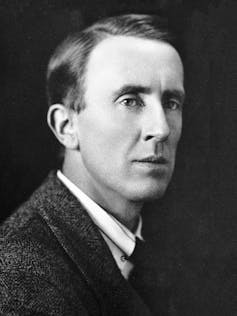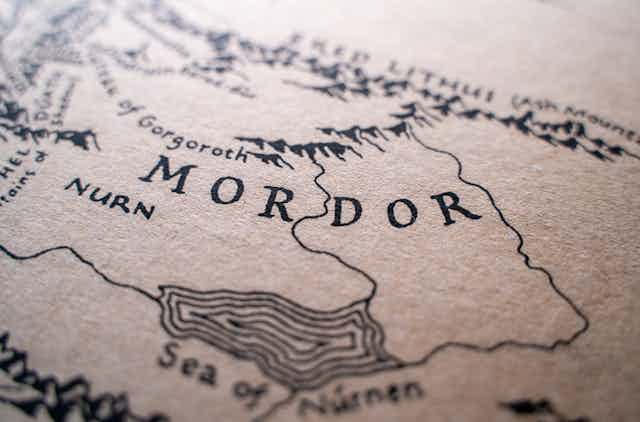Italian prime minister Giorgia Meloni and I have precious little in common. But one important thing we share is The Lord of the Rings. Both she and I regard the J.R.R. Tolkien trilogy as a personal “sacred text” which has profoundly shaped our values and our political commitments.
Speaking as a queer, leftist theologian, however, the tricky thing about sacred texts is this: when you come to them searching for echoes of your own beliefs, with a little digging you can usually find something.
The fact that the leader of a far-right political party and I can both come to The Lord of the Rings and find sustenance for our imaginations suggests one of two things. Either Middle-earth is wide and wild enough to admit multiple interpretations, or one of us is reading it wrong.
Conservative Tolkien scholars have frequently claimed the latter. As Joseph Pearce writes in his foreword to Bradley Birzer’s book Tolkien’s Sanctifying Myth (2003), it is “not merely erroneous but patently perverse to see Tolkien’s epic as anything other than a specifically Christian myth”.
J.R.R. Tolkien was a devout Roman Catholic. In a 1954 letter to the Jesuit Robert Murray, he described his trilogy as a “fundamentally religious and Catholic work”.
Tolkien was a particular kind of Catholic. Pre-Vatican II era (the most recent council of the Catholic Church) and English, he shared his tradition’s deep suspicion of modernity.
Middle-earth, with its ranked orders of elves and angels, and distinctions between High and Low Men, was influenced by the medieval Catholic notion of the Great Chain of Being in which God ordains natural hierarchy in the cosmos.
It’s because of this that some of today’s far-right claim Tolkien as one of their own, arguing that his work underwrites values such as reactionary nationalism, rigid gender roles and the use of state violence to enforce cultural homogeneity.
Interpreting The Lord of the Rings
In his book The Reactionary Mind (2011), political theorist Corey Robin argues that conservatism is, at its root, the defence of hierarchy. It would therefore be intellectually dishonest to deny that The Lord of the Rings could have certain right-wing interpretations.

If you are a neofascist, for example, looking to justify xenophobia and racism, you can latch onto Tolkien’s troubling tendency to cast nonwhite characters in the role of evil. If you are a reactionary Catholic who longs for a restoration of the Holy Roman Empire, you can read Aragorn’s return and coronation as justification for theocracy. These things are an inescapable part of the text.
However, if you wish to produce such a reading of The Lord of the Rings, you will have to ignore a lot of other things about the text too.
The fact, for instance, that the War of the Ring requires cooperation between diverse peoples, from diverse backgrounds, with diverse goals, in order to confront a common threat.
Or the fact that Sauron and Saruman seek to impose their will through forced industrialisation, brutal oppression of subject populations and naked violence on a mass scale – all favourite weapons of the far right. (The Ents even rise up against their mechanising oppressors and drown their factories).
Then there’s the fact that the plot hinges around the One Ring, an object with the power to dominate which corrupts all who seek to wield it and which must be destroyed – not deployed – in order to overcome the forces of evil once and for all.
And the fact that the salvation of the world is brought about not by force of arms, but by the dogged persistence and fierce love of the small and powerless, by pity for the pitiless and mercy upon the merciless. These are, to my mind, far more “fundamentally religious and Catholic” ideas than racialised hierarchy is.

In a recent paper, I argued that The Lord of the Rings is too open to interpretation – and too enchanting – to collapse into a single authoritative meaning.
In his foreword to the second edition of The Lord of the Rings, Tolkien defends “the freedom of the reader” against reductive readings. He was far more concerned that readers take his novel on its own terms as a work of art, rather than arrive at some objectively “correct” interpretation. There is, quite simply, no one “right” way to read Tolkien – but, in my opinion, there are wrong ones.
There are readings that ignore what’s in the text, twisting it to suit the reader’s own religious, cultural and political purposes. Far-right readings of The Lord of the Rings do not come from nowhere. But they are far from the only solution to the riddle of Middle-earth’s enduring power. Tolkien was savvy enough to realise that his imaginative reconstruction of a mythic past was fiction. Reactionary ideologues lack any such self awareness.
Far-right readings of The Lord of the Rings are therefore wrong in the sense that they are technically bad interpretations. More importantly to my mind, however, they are ethically wrong. There is nothing in Middle-earth – not even its most troubling elements – which requires readers to take it as an argument for far-right nationalism. That interpretation is a choice – and it must be resisted.

Looking for something good? Cut through the noise with a carefully curated selection of the latest releases, live events and exhibitions, straight to your inbox every fortnight, on Fridays. Sign up here.

